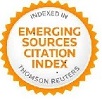Ghosts of the past versus soldiers of the present: rhetoric and historiography in the new cultural approach to Greco-Latin military history
Keywords:
Ancient historiography, Ancient Rhetoric, Ancient warfare, J. E. LendonAbstract
The purpose of this paper is to analyze in depth some of the implications that have the recent publication of the book of J. E.Lendon (Soldados y fantasmas. Historia de las guerras en Grecia y Roma, Barcelona: Ariel, 2006) for the study of the relations between rhetoric and historiography in the graeco-roman Antiquity.
Downloads
References
CAMPBELL, B.(2002),War and Society in Imperial Rome 31 BC – AD 284 (War and Society), Londres y N. York: Routledge.
CARTLEDGE, P.(2007),Termópilas: la batalla que cambió el mundo, Barcelona: Ariel.
CHANIOTIS, A.(2005),War in the Hellenistic World. The Ancient World at War, Oxford: Blackwell.
ERDKAMP, P.(ed.) (2007), A Companion to the Roman Army, Londres: Blackwell.
GOLDSWORTHY, A. (2002), Las Guerras Púnicas, Barcelona: Ariel.
___ (2005a), El ejército romano, Madrid: Akal.
___ (2005b), Grandes generales del ejército romano: Campañas, estrategias y tácticas, Barcelona: Ariel.
HANSEN, M. H. (1993), “The Battle Exhortation: Fact or Fiction?”, Historia 42, 161-180.
HANSON, V. D.(1999),The Wars of the Ancient Greeks: The Invention of Western Military Culture, Cassell.
___ (2004), Matanza y cultura: Batallas decisivas en el auge de la civilización occidental, Madrid: Turner.
___(2005),A War Like No Other: How the Athenians and Spartans Fought the Peloponnesian War, Random House.
IGLESIAS ZOIDO, J. C.(2007),“The Battle Exhortation in Ancient Rhetoric”, Rhetorica 27.2, 135-151.
___ (2008), “Una figura olvidada: el rétor Lesbonacte”, Actas del XII Congreso Español de Estudios Clásicos (Valencia, Octubre 2007), Madrid: SEEC (en prensa).
LENDON, J. E. (1999), “The Rhetoric of Combat: Greek Military Theory and Roman Culture in Julius Caesar’s Battle Descriptions”, Classical Antiquity 18, 273-329.
LYNN, J. A. (2003), Battle: A History of Combat and Culture from Ancient Greece to Modern America, Boulder: Westview Press.
MARINCOLA, J. (1997), Authority and Tradition in Ancient Historiography. Cambridge: Cambridge University Press.
MOMIGLIANO, A. (1978), “The Historians of the Classical World and their Audiences”, Annali della Scuola Normale di Pisa 8, 59-75.
NICOLAI, R. (1992), La storiografia nell'educazione antica,Pisa: Giardini.
___ (2007), “L’uso della storiografia come fonte di informazioni: teoria retorica e prassi oratoria”, en J. C. Iglesias Zoido (ed.), Retórica e historiografía:l discurso militar en la historiografía desde la Antigüedad hasta el Renacimiento, Madrid: Ediciones Clásicas (en prensa).
PARKER, G. (ed.) (2000), The Cambridge Illustrated History of Warfare, Cambridge: University Press.
PAUL, G. M. (1982), “Urbs capta: Sketch of an Ancient Literary Motif”, Phoenix 36, 144-155.
PÉREZ MARTÍN, I. (2002), “Lectores y público de la historiografía griega”, Estudios Clásicos 44, 125-148.
RAAFLAUB, K. (ed.) (2007), War and Peace in the Ancient World, Malden, MA y Oxford.
SABIN, PH., VAN WEES, H. y WHITBY, M. (edd.) (2008), The Cambridge History of Greek and Roman Warfare, 2. vols., Cambridge: University Press.
STRAUSS, B. (2006), The Trojan War. A New History, N. York: Simon and Schuster.
___ (2007), La Batalla de Salamina. El mayor combate naval de la Antigüedad, Barcelona: Edhasa.
VAN WEES,H. (2004), Greek Warfare. Myths and Realities, Londres: Duckworth.












